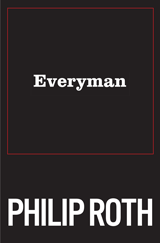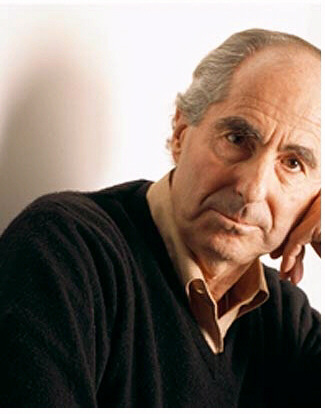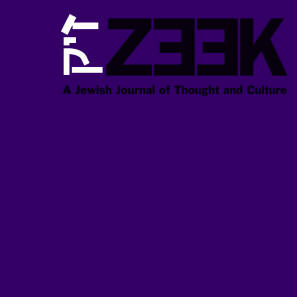 June 06
June 06
Live By No Man's Code: The Religious Forms of Philip Roth's "Everyman"
Stephen Hazan Arnoff
 |
Winner of a Rockower Ribbon. |

Reviewed:
Phillip Roth,
Everyman
Houghton Mifflin, 2006
Once upon a time old school analyst Dr. Spielvogel diagnosed his patient's problem as a crippling case of displaced morality in an endlessly restless sea of sexual desire. Remember "The Puzzled Penis," Internationale Zeitschrift fur Psychoanalyse, Vol XXIV? Loyal Rothians know that this seminal article was first cited in Roth's 1967 novel Portnoy's Complaint, the ribald masterpiece documenting star patient Alexander Portnoy’s battle with mother, lovers, and that impatient little friend down below:
Portnoy's Complaint: A disorder in which strongly-felt ethical and altruistic impulses are perpetually warring with extreme sexual longings, often of a perverse nature. Spielvogel says: 'Acts of exhibitionism, voyeurism, fetishism, auto-eroticism, and oral coitus are plentiful; as a consequence of the patient's 'morality,' however, neither fantasy nor act issues in genuine sexual gratification, but rather in overriding feelings of shame and the dread of retribution, particularly in the form of castration.
It is no surprise that Philip Roth's newest novel Everymancontinues to dredge through the very same stew of sex and dread – morality and mortality – diagnosed by Dr. Spielvogel. The ever hungry, ever burdened body may be Roth's most beloved topic and Everymanis a tale of the pleasure, terror, boredom, failure, and wisdom of its fullest, final journey.
Much time has passed for the rabblerousing author of Portnoy's Complaint. Roth’s body is now old and his body of work is very, very large. Seventy-three years old following the death of his hero and mentor Saul Bellow in April 2005 – Roth claims to have found the inspiration for writing Everymana day after attending Bellow's funeral – he is now the dean of Jewish American letters, if not the dean of American Letters as a whole. Roth's mantel is heavy with literary awards. In the gesture most gratifying for the author, his reputation has been sealed with commitment for publication by 2013 of all of his work in a definitive edition by the Library of America. He has an academic journal devoted wholly to his work. Now an elder statesman, still incredibly prolific, and never one to fear taking on the deepest of philosophical literary callings, Roth uses Everymanto stare unblinkingly through and beyond the human body into the abyss that is its death.

M&M's
Roth's novel shares its title with "Everyman," a dogmatic Christian morality play allegorizing the crux of morality and mortality. An anonymous man in the dotage of an average life with an average overflow of crimes and misdemeanors, the Christian Everyman is not expecting visitors when death knocks on his door. "O Death," he says, "thou comest when I least had thee in mind…" Everyman asks archetypal friends Fellowship, Discretion, Goods, and many more for comfort and guidance as he is pulled towards death, but none will abide. Only Good Deeds is willing to accompany him out of the world, and through the depth of Good Deeds' comfort, Everyman repents. Classical Christian lessons of morality are clear: Good deeds coupled with repentance are the best for which human beings, flawed to the core, might strive. Embodying moral life in humility before God mutes death's blow and brings life's only purpose and salvation.
In rereading the play's traditional Christian understanding of morality and mortality through a secular 21st century lens, Roth immerses himself in a thematic pull already familiar in his writing. Morality and mortality have been the heavy twins serving as the axes of some of his greatest work, the shifting poles amongst which Roth's heroes weave and stumble. See, for example, the troika of 1997-2000's American Pastoral, I Married A Communist, and The Human Stain, which critic Greil Marcus called "as complete and uncompromised a piece of American art" as any of its era. If the Christian "Everyman" teaches that the soul naturally seeks salvation in the World-to-Come while the flawed, burdening body wishes (at best) to continue to roll in the mud of physical life, the hero of Roth's Everyman does not think about salvation at all. He lives for life and life only, because in Roth's world, there are no souls to save. In fact, Roth's Everyman – nameless while all other main characters (including three ex-wives) have names – claims that if he could write his autobiography it would be entitled The Life and Death of a Male Body. As such, he considers himself a rather ordinary person, or better yet, an "everyman," an art school graduate who chooses the safe path of a career in advertising, marriage (thrice as mentioned), and children (two unforgiving sons from his first wife and one loving daughter from his second). But what makes Roth's Everyman most aptly representative of humanity is the merciless, irreversible path he walks towards death without choice or cheer. "Old age isn't a battle," he says, "old age is a massacre." While traditional Christianity offers the opium of the afterlife beyond the visceral world, in Roth's Everyman, when the body passes, nothing remains.
Despite common narrative frameworks reflecting on the implications of morality and mortality, "Everyman" the play and Everymanthe novel depict antithetical religious worlds. In Roth's realm religion is a dead end. Yet Roth's choice of a traditional religious template for his novel suggests more than just an ironic critique of religion. Meditations upon questions of morality and mortality and sex and salvation originating from a religious template suggests an important path for "secular" art – work that admits for itself no religious covenant, empathy, urge, or mission – to engage essential religious questions in modes that most of today's mainstream writers and thinkers just plain miss. Like most mainstream "secular" writers, Roth cannot ignore religious influence in the formation of his grand questions of art, philosophy, rhetoric, psychology, and literature. And as a writer of grand ideological scope, even if Roth desires to shove traditional answers about ethereal questions aside because of their perceived attachments to religious absurdity, oppression, or boredom, he invariably faces many of the very same challenges engendered by the core philosophical questions within which religious thinking thrives. In Everyman, Roth takes on the role of a modern secular fabulist of religion, crafting a transcendent, iconoclastic, post-religious tale – a morality play for a time when inherited views, practices, and narratives of traditional religions often appear either threatening or obsolete to liberal artists, thinkers, writers, teachers, and readers. As the traditional plot of "Everyman" is laid bare for a provocative secular reading, space opens for new varieties of religious thinking that challenge traditional dogma about essential questions – like what to do about the giant vacancy sign left flashing on lifeless bodies after death. Everymansuggests a creative mode for translating and reimagining religious fetish, teaching, power, and myth about mortality for a post-traditional world.
The Iron Cage
In his last decade of work, Roth has created narratives that unravel American history since the Depression against a backdrop of resurgent Christian fundamentalism in the United States and all variety of fundamentalisms in the lands beyond it. He has critiqued and at times pulverized orthodoxies in spheres political, religious, and social. As a thinker about religious issues and the nature of the soul particularly, Roth takes the staunch anti-religious track of a scientist. More than ever, Everyman brings a scientist's curiosity, discipline, and vocabulary to the narrative of the body. The book is brimming with juicy medical details – stents and atrial fibrillation and strokes and pain killers and arrhythmias and an army of peers dropping like flies from the killer disease of aging in all of its forms. But neither the hero of the book nor its author is even slightly interested in deliverance for the soul amidst this battle. In fact, in an interview with Jonathan Freeman posted by The Age, Roth said that in doing the research for the book he noted that as people grow older their biography narrows down to their medical biography. They spend time in the care of doctors and hospitals and pharmacies and eventually, as happens here, they become almost identical with their medical biography.









